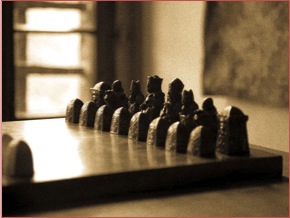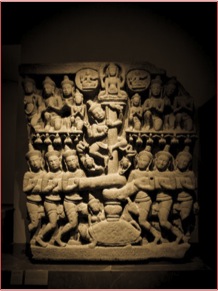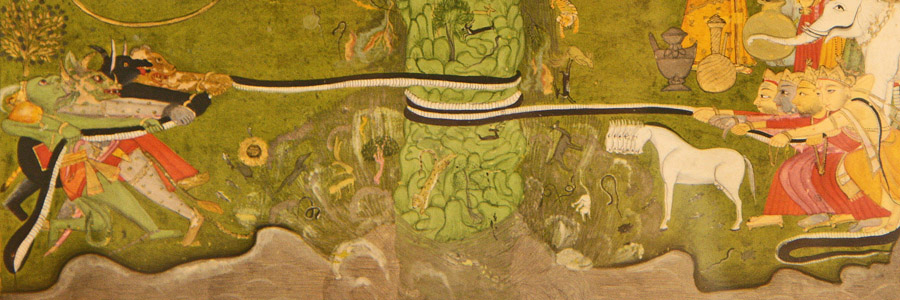Let us take a backward glance:
From February to April, we superimposed Gurdjieff’s work onto the legend of the life of Prince Siddhartha. The comparison taught us to realize our imprisonment in sleep (Liberation Part 1 – Realization); then formulate a resolve to depart from prison (Liberation Part 2 – Resolution); and then to expect this resolve to spark internal opposition (Liberation Part 3 – Opposition).
From May to July, we continued superimposing Gurdjieff’s work, now onto the Biblical creation. To see our internal opposition, we must turn on the light of self-observation (Creation Part 1 – Self-Observation); this enables an internal separation of the true from  the false (Creation Part 2 – Separation); and only then can we find firm ground on which to form new attitudes that reflect consciousness (Creation Part 3 – Reflection).
the false (Creation Part 2 – Separation); and only then can we find firm ground on which to form new attitudes that reflect consciousness (Creation Part 3 – Reflection).
Having followed this sequence of efforts, we align those attitudes that support our work against the mechanical attitudes that resist it. As these two groups engage each other, like two opposing armies on a chessboard, we experience an internal tug of war, which is Gurdjieff’s prerequisite for attaining unity:
“Fusion, inner unity, is obtained by means of ‘friction,’ by the struggle between ‘yes’ and ‘no’ in man… if a struggle begins in [man], and particularly if there is a definite line in this struggle, then, gradually, permanent traits begin to form themselves, he begins to ‘crystallize.’” – George Gurdjieff
In the coming posts, we will superimpose Gurdjieff’s work on the Hindu tradition. The Churning of the Milky Ocean is a Hindu legend that tells of an age in which the cosmic balance between good and evil (personified as ‘gods’ and ‘demons’) had been disturbed, threatening the world with impending chaos. Of particular loss was the nectar of immortality, called Amrita in Sanskrit.
To retrieve this Amrita and restore equilibrium, Vishnu prescribed the following:
“Let all the gods associated with the demons cast medicinal herbs into the sea of milk; and then taking the mountain Mandara for the churning-stick, the serpent Vasuki for the rope, churn the ocean together for amrita.” – The Mahabharata
 To bring this colossal churning about, gods and demons had to collaborate while still opposing each other. In other words, they were not asked to change their contrary natures, only harness them to the greater aim of preserving the cosmos.
To bring this colossal churning about, gods and demons had to collaborate while still opposing each other. In other words, they were not asked to change their contrary natures, only harness them to the greater aim of preserving the cosmos.
This unusual collaboration expresses in mythological form what Gurdjieff conveyed systematically: the struggle between ‘yes’ and ‘no’ is life-giving and is the only way to unity. As without so within: if man simulates this churning by counterbalancing his mechanical habits with work attitudes, he affects an inner transformation and is elevated to the stature of a harmonious cosmos.
When we reviewed opposition in the April post, we approached it from a beginner’s point of view. To a sleeping man desirous of waking up, thoughts, emotions and sensations pose a threat. But now, in this more advanced stage where consciousness is already present, they become collaborative forces, indispensable to it. We have moved from opposition to collaboration.
This month, I invite my writers to share experiences of inner-collaboration; how Work attitudes pull against mechanical habits to help sustain consciousness.
“Obstacles are very useful to a man; if they did not exist they would have to be created intentionally, because it is by overcoming obstacles that man develops those qualities he needs.” – George Gurdjieff
